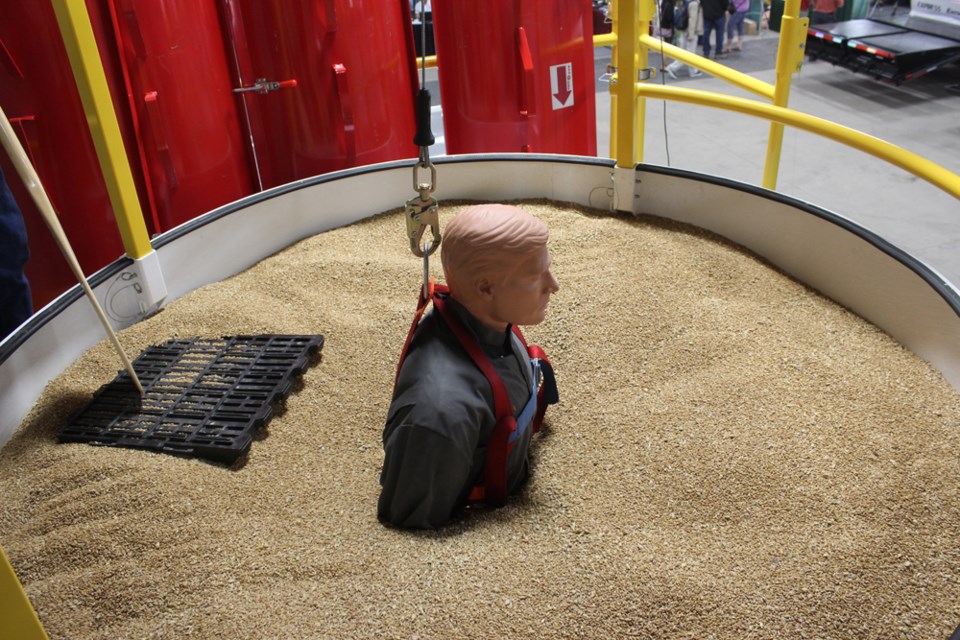Grain related injuries are on the rise, not just on the prairies but across Canada.
Thanks to the BeGrainSafe mobile demonstration unit, designed by the Prairie Agricultural Machinery Institute (PAMI) in Humboldt, Canadian Agriculture Safety Association (CASA) is doing something about it.
“Given Canada is certainly seeing an increase in volume of grain produced as well as the storage facilities increasing in size, and the rate at which that grain is being transferred...those all point towards an increased potential for grain entrapment,” says CASA Agricultural Safety and Health Specialist, Glen Blahey.
The trailer concept has been widely used in the United States but this is the first Canadian made trailer designed for touring Canada, making its debut at Canada’s Farm Progress Show in Regina June 21-23.
Using the mobile unit, CASA personnel demonstrates how to rescue someone who is partiality submerged in grain using a mannequin. The mobile has three purposes; grain safety awareness, training for first responders, and workplace safety planning, says PAMI Project Leader, Mark Marianchuk.
The open round top bin portion of the mobile can hold 100 bushels of grain, in CASA’s case of wheat, which can add 6,000 pounds of weight to the trailer.
Entrapment is the biggest risk when it comes to the storage and movement of grain material, says Blahey, because it can happen literally in seconds. People who handle grain also do not realize the level of force grain can exert.
A display on the BeGrainSafe trailer features a three to four pound mannequin leg covered with 10 inches of grain. Blahey says that it would take 30 pounds of force to pull the leg out from the grain.
“What people who work in the grain industry needs to stop and realize is it does not seem like much (grain); you can take your hand and put your hand 10 inches into the grain and pull it out no problem. But if your body is covered in 10 inches of grain, you are trapped,” says Blahey.
In 2015 alone, there was 7 deaths by grain entrapment, including four children, and those people cannot tell their story, says Blahey.
”The incidents continue to happen, as recently as three weeks ago...what we need to do is build that level of awareness of the hazards associated with the handling and storing and the need to develop an effective strategy to avoid those hazards.”
Many people came on board to make the mobile demonstration unit a reality.
Raising awareness is not one organization’s responsibility, says Blahey, and many have gotten on board, considering the increasing unfortunate number of fatalities.
For more information, visit http://casa-acsa.ca/BeGrainSafe.




